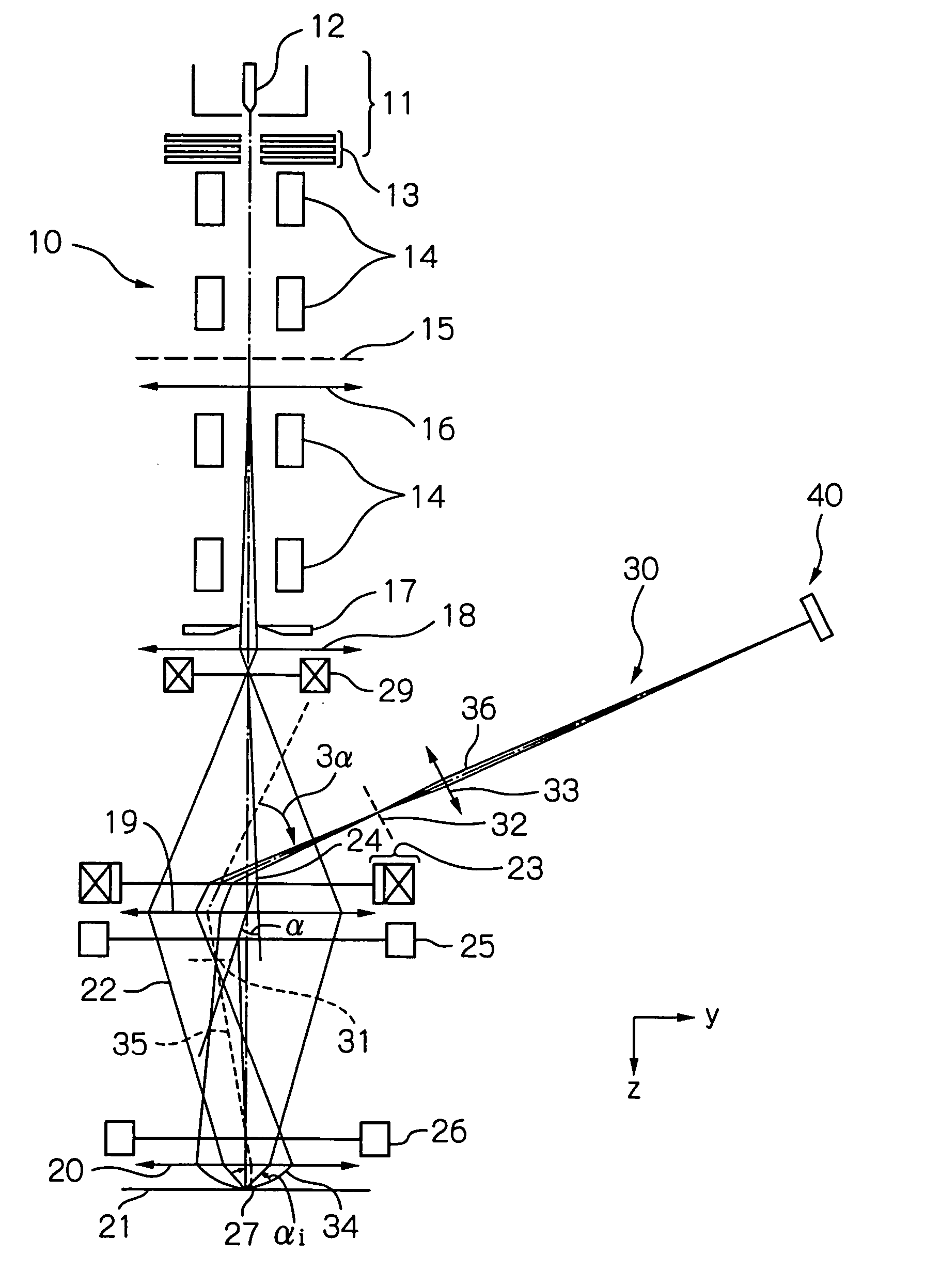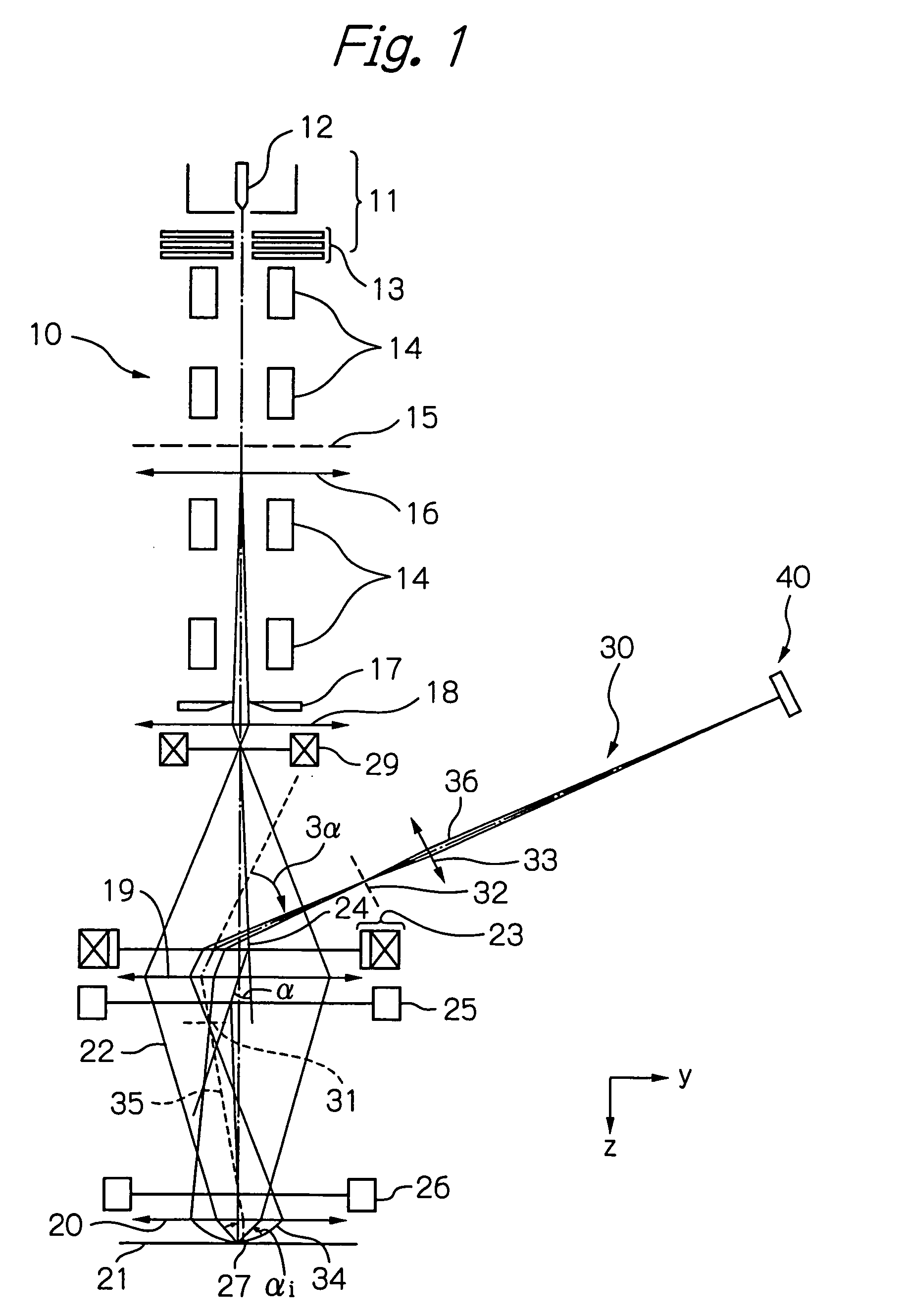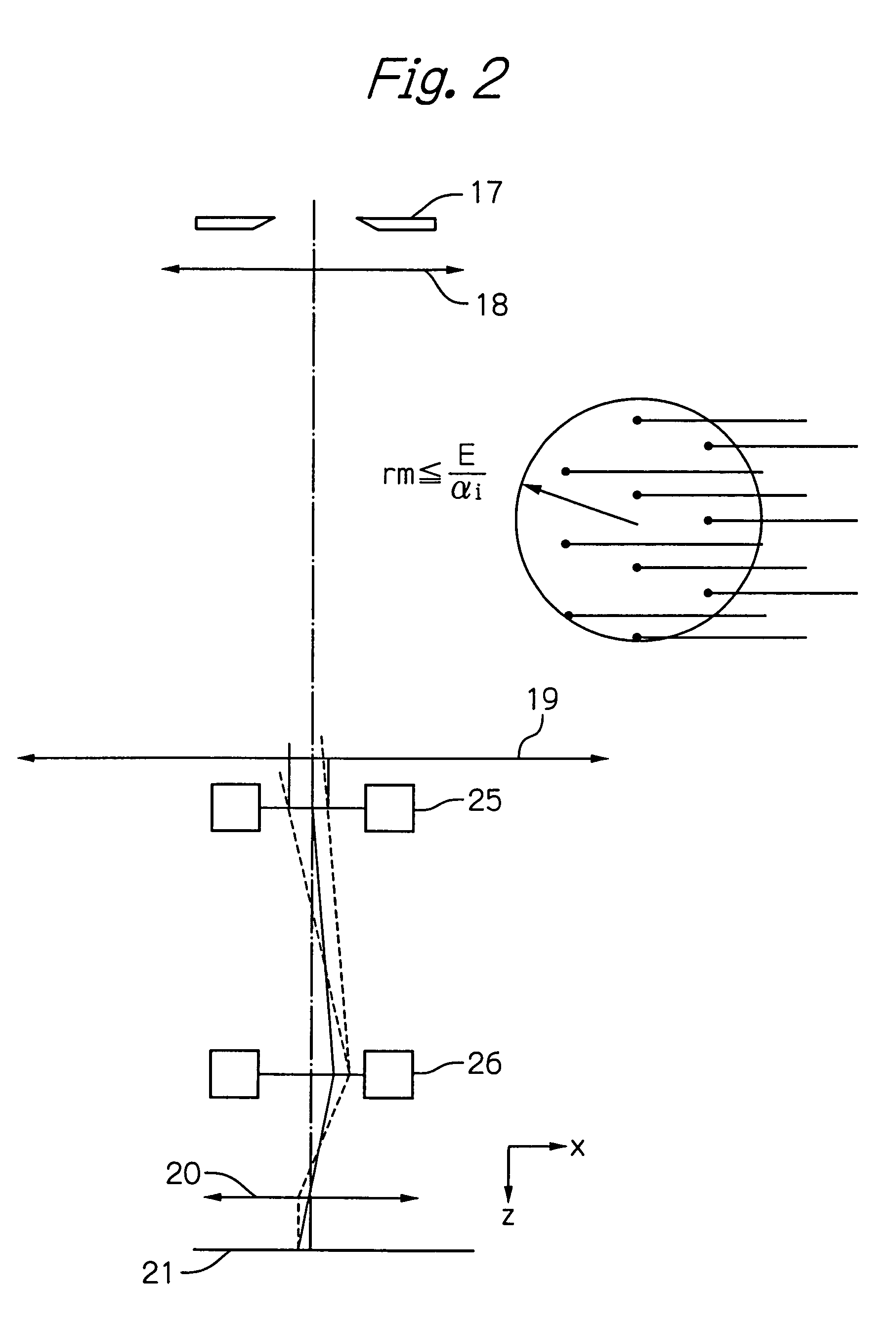Electron beam apparatus, a pattern evaluation method and a device manufacturing method using the electron beam apparatus or pattern evaluation method
a technology of electron beam and electron beam, applied in the direction of material analysis using wave/particle radiation, instruments, nuclear engineering, etc., can solve problems such as great aberration
- Summary
- Abstract
- Description
- Claims
- Application Information
AI Technical Summary
Benefits of technology
Problems solved by technology
Method used
Image
Examples
first embodiment
FIG. 1 shows an electron optical system in one embodiment of the present invention, comprising a primary optical system 10, a secondary optical system 30 and a detecting system 40.
In the primary optical system, an electron gun 11 controlls a LaB6 cathode 12 to be operative under a space-charge limited condition to thereby reduce a shot noise. An anode 13 is composed of three sheets of electrodes, and it can be controlled to perform a lens operation as well as to produce a high intensity condition and / or a high emittance condition by changing a voltage applied to a first anode. An axial alignment with this anode may be accomplished by shifting the cathode and the Wehnelt mechanically in the XY directions or the θ direction. Further, the axial alignment of the beam emitted from the electron gun is carried out by axial-aligning deflectors 14. A multi-aperture plate 15 is disposed in a certain range of the beam diverged from the electron gun 11, for example, within a range of angle de...
second embodiment
An embodiment of a pattern evaluation method according to the present invention will now be described.
FIG. 3(a) is a plan view illustrating a way for dividing a chip, or a sample, formed on a wafer into stripes and FIG. 3(b) is an enlarged view of a part designated by “F” in FIG. 3(a). Further, FIG. 4 is an enlarged plan view illustrating a way for dividing the chip into stripes.
In FIG. 3(a), the Z axis is taken in parallel to a normal line of a surface (the drawing sheet surface) of a wafer W, the X axis is taken in parallel to the sheet surface in the left and right direction, and the Y axis is taken in parallel to the sheet surface in the up and down direction. In this illustrated embodiment, a large number of chips C are formed on the wafer W almost across an entire surface thereof by 10 columns in the X direction and 4 or 2 rows in the Y direction. To simplify the description, in the drawings, a row address (1 to 4) is assigned along a longitudinal direction and a column ad...
third embodiment
FIG. 8 is a flow chart representing a way for applying the electron beam apparatuses or the pattern evaluation methods, which have been described in the above embodiments, to the evaluation of a wafer in a semiconductor device manufacturing process.
An example of the device manufacturing process will now be described with reference to a flow chart of FIG. 8.
The manufacturing process includes the following main processes. (1) A wafer manufacturing process for manufacturing a wafer (or wafer preparing process for preparing a wafer). (Step 10) (2) A mask manufacturing process for fabricating a mask to be used in the exposure (or a mask preparing process). (Step 11) (3) A wafer processing process for performing any processing treatments necessary for the wafer. (Step 12) (4) A chip assembling process for cutting out those chips formed on the wafer one by one to make them operative. (Step 13) (5) A chip inspection process for inspecting an assembled chip. (Step 14)
It is to be a...
PUM
| Property | Measurement | Unit |
|---|---|---|
| width | aaaaa | aaaaa |
| distances | aaaaa | aaaaa |
| area | aaaaa | aaaaa |
Abstract
Description
Claims
Application Information
 Login to View More
Login to View More - R&D
- Intellectual Property
- Life Sciences
- Materials
- Tech Scout
- Unparalleled Data Quality
- Higher Quality Content
- 60% Fewer Hallucinations
Browse by: Latest US Patents, China's latest patents, Technical Efficacy Thesaurus, Application Domain, Technology Topic, Popular Technical Reports.
© 2025 PatSnap. All rights reserved.Legal|Privacy policy|Modern Slavery Act Transparency Statement|Sitemap|About US| Contact US: help@patsnap.com



